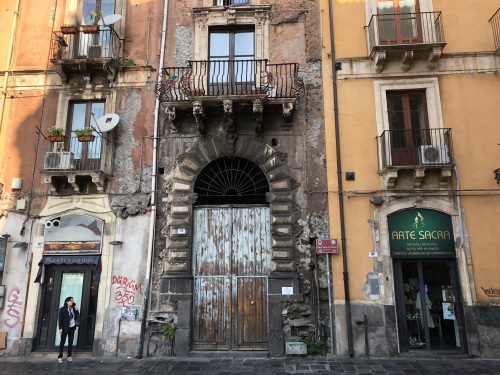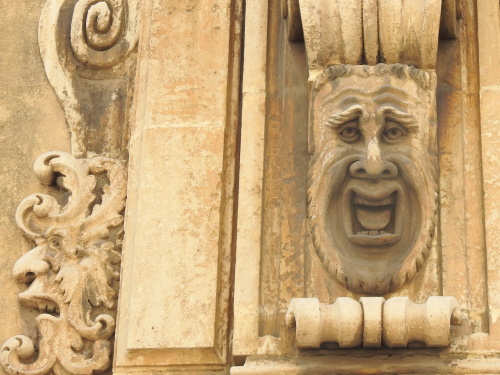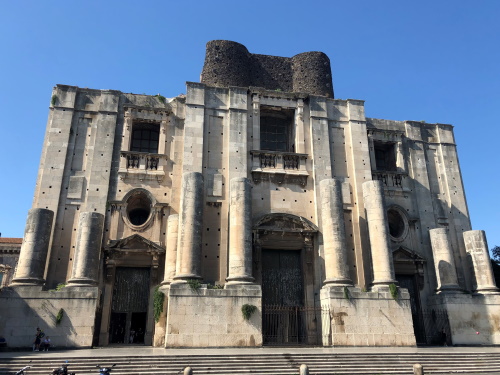Blog WHS Visits
Val di Noto - Catania
During my Sicily trip of 2006 I had already ticked off the Val di Noto WHS by visiting the towns of Modica, Ragusa, Scicli and Noto. It comprises 4 more locations however, including specific urban areas of the city of Catania. Catania is also home to the busiest international airport on Sicily, so I walked around there for a few hours before my return flight to the Netherlands after my Etna hike in October 2019.
It takes a 20-minute walk from the station to Cathedral square, the historic heart of the city. The city has a bad reputation, but on this sunny Sunday even the railway station area did look OK. Catania’s excuse for looking gloomy is that it was built from grey-black lava stone. The excess of (badly done) graffiti sprayed on the walls and the many vacant buildings do not help either.
Yet there is also beautiful art and architecture to be found here. Just like the rest of the Val di Noto, Catania was hit by a major earthquake in 1693. The city was rebuilt in the same location making ample use of the fashionable Sicilian baroque style. Typical of the Sicilian baroque is the depiction of masks, putti and “and a particular flamboyance”. Wiki lists 10 characteristics, such as the grotesque masks (shown in Photo 2, taken at the entrance of Palazzo Biscari) and the use of columns and balconies (seen at the San Nicola l'Arena church, in Photo 3).
In Catania the historic buildings are scattered throughout the city center. Cathedral square is the largest tourist magnet, with the Cathedral and the Saint Agatha Abbey as its major monuments. A remarkably high number of tourists were milling around in this area when I visited on Sunday morning - Catania is a port of call on numerous Mediterranean cruises. I somehow felt sorry for the people that were dumped here and looked bewildered at their surroundings.
Somewhat away from the main street lies the Palazzo Biscari. This is a former palace, now in private ownership. Both its façade and the back wall are worth seeing for their rich baroque decorations. The gate was open when I visited: it showed a large courtyard and the entrance to the palace via a large double staircase. Normally you can only visit the palace by appointment – today it seemed to be an Open Day of some sorts.
North of Cathedral square is a neighborhood with even more Sicilian baroque, especially showing in churches with exuberant facades. The strangest of those is connected to the Benedictine monastery: the San Nicola l'Arena church has never been fully completed. In its interior you'll find a huge, white-washed hall with a meter-long sundial on the floor.
Els - 10 November 2019


